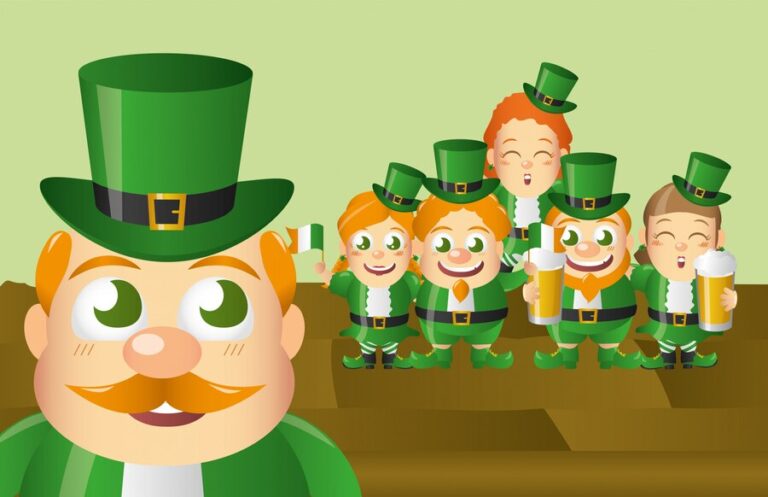Riddles are little puzzles wrapped in wordplay and logic, inviting you to think critically while having fun. For children, they’re more than just a quick game—they’re tools for growth. From boosting language skills to encouraging problem-solving, riddles are a fantastic way to entertain and educate simultaneously. And when it comes to riddles with charm and wit, Irish riddles easily stand out.
This post introduces the magic of Irish riddles, provides a selection of easy, themed riddles with their answers, and offers tips on how parents and teachers can use them to develop children’s critical thinking. By the end, you’ll want to try these riddles out with your kids or classroom!
The Magic and Meaning of Irish Riddles
Riddles hold a special place in Irish culture. Historically, people used riddles as tools of sharp wit during gatherings, often testing one another in a battle of cleverness. They were a way to pass on traditions, share laughs, and showcase the beauty of the Irish language and creativity.
Today, Irish riddles retain that same charm, offering simple yet thought-provoking puzzles for children. They’re rooted in everyday experiences—nature, animals, and festivals—but often carry layers of meaning, making them perfect for curious young minds.
Easy Irish Riddles with Answers and Explanations
Here’s a vibrant collection of easy Irish riddles designed for kids. To make things even more engaging, we’ve provided answers and explanations to help children grasp the logic and wordplay.
Animal-Themed Riddles
These riddles celebrate the natural world and the creatures that inhabit it, a theme close to the Irish countryside.
- What has four legs in the morning, two legs in the afternoon, and three legs in the evening?
Answer: A human.
Explanation: This riddle cleverly describes the stages of life. A baby crawls on four legs, an adult walks on two legs, and an elderly person uses a cane (the “third leg”).
- What has a tail, but no body?
Answer: A coin.
Explanation: The “tail” refers to the reverse side of a coin, offering a fun play on the meaning of “tail.”
- What can jump higher than a leprechaun?
Answer: Anything that can jump! Leprechauns can’t jump higher than themselves.
Explanation: This one’s a trick question, encouraging kids to think critically about assumptions.
Nature-Themed Riddles
Ireland’s lush greenery and rolling hills come alive in these nature-inspired riddles.
- What has roots that nobody sees and is taller than trees?
Answer: A mountain.
Explanation: Mountains have “roots” in the earth and stand much taller than trees, using figurative language to describe their grandeur.
- What has rivers but no water, forests but no trees, and roads but no cars?
Answer: A map.
Explanation: This riddle plays with imagery—the rivers, forests, and roads are only representations on a map, not the real thing.
Holiday-Themed Riddles
Perfect for festive occasions like St. Patrick’s Day, these riddles are simple and cheerful.
- Why can’t you iron four-leaf clovers?
Answer: Because you shouldn’t press your luck!
Explanation: It’s a humorous take on the idea of trying not to “press” or ruin good fortune.
- What’s a leprechaun’s favorite kind of music?
Answer: Shamrock ‘n’ roll!
Explanation: This riddle uses a playful pun, combining “shamrock,” a symbol of Ireland, with rock ‘n’ roll music.
Everyday Simple Riddles
Here are some timeless favorites to lighten the mood.
- What comes down but never goes up?
Answer: Rain.
Explanation: A straightforward answer perfect for helping younger kids understand the logic through observation.
- The more you take, the more you leave behind—what am I?
Answer: Footsteps.
Explanation: A beautiful piece of wordplay that helps kids connect the clues to actions.
Why Kids Benefit from Educational Riddles
Riddles do more than entertain—they also develop language and critical thinking skills. Here’s why parents and teachers should incorporate riddles into kids’ routines:
- Critical Thinking: Riddles challenge children to think outside the box, boosting skills like inference and logical reasoning.
- Language Development: Exposure to tricky wordplay encourages vocabulary expansion and a deeper understanding of language nuances.
- Listening Skills: Kids need to focus on every word of a riddle to decipher its meaning, improving attention and comprehension.
- Creative Problem-Solving: The imaginative scenarios in riddles inspire innovative thinking strategies.
- Cultural Connection: Irish riddles introduce children to Irish heritage, fostering a sense of global understanding.
How to Use Riddles in Learning Settings
Riddles can become an engaging tool for both parents and educators. Here’s how:
- Set Riddle Time: Dedicate a few minutes daily for riddles, either during family time at home or as an icebreaker in the classroom.
- Create Themed Challenges: Organize riddle competitions with themes like holidays, seasons, or animals to keep kids motivated.
- Encourage Group Discussions: After reading a riddle, ask children to share their thought process. This helps improve their communication skills and builds confidence.
- Integrate Creative Tasks: Have kids create their own riddles as a fun group activity. It’s a great way to reinforce creativity and storytelling.
- Tie It to Curriculums: Use riddles as fun introductions to educational topics, like science or history.
Explore the Timeless Fun of Riddles
Riddles are a timeless source of entertainment and education, and Irish riddles, in particular, bring a special charm that’s hard to resist. Sharing riddles is more than just a fun pastime—it’s a way to help kids grow, think, and connect to the world around them.
Do you have a favorite riddle to share? Leave it in the comments or send it to us on social media! And if you enjoyed these easy Irish riddles, subscribe to our blog for more stories, games, and educational tips.
Here’s to fun-filled learning and plenty of “aha” moments!
